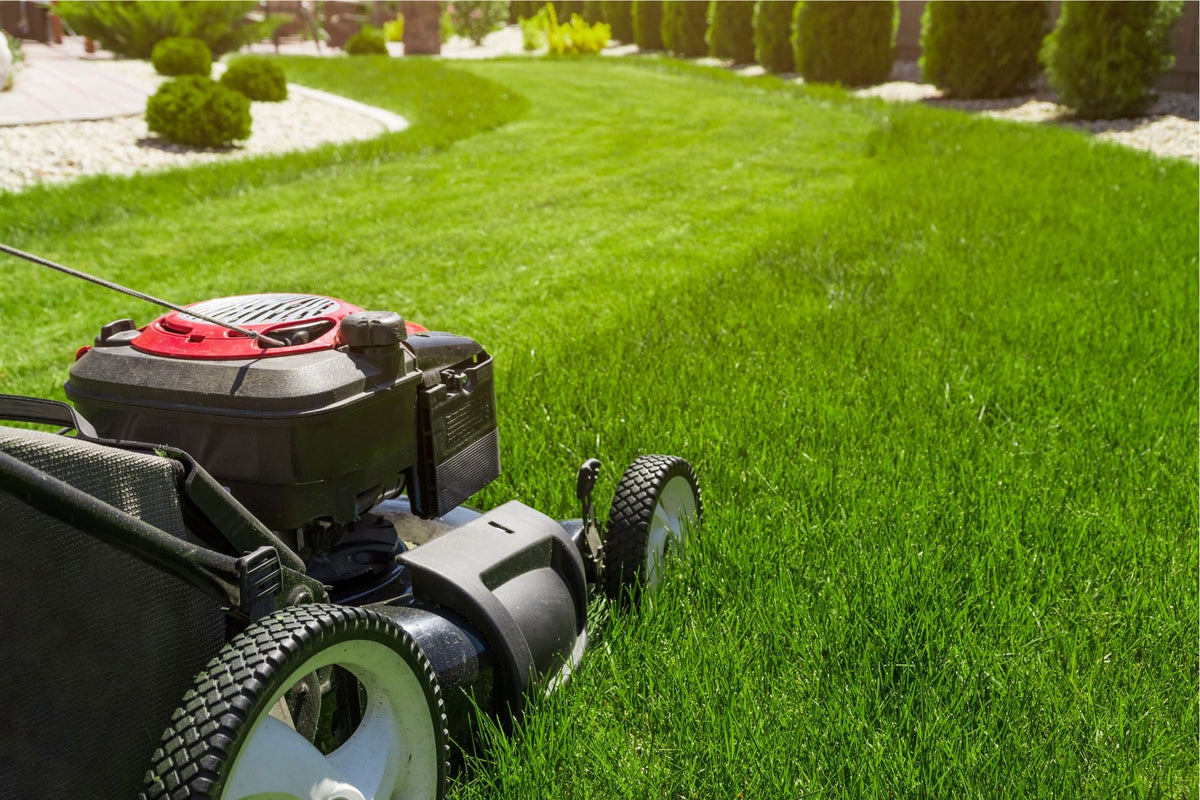

The Essential Guide to Lawn Care: Creating a Healthy Landscape
|
|
Time to read 3 min
This store requires javascript to be enabled for some features to work correctly.
|
|
Time to read 3 min
Lawn maintenance requires consistent care and attention, but the rewards are well worth the effort.
A well-maintained lawn is the foundation of any landscape, providing a vibrant and inviting space for outdoor activities and relaxation. However, achieving and maintaining a lush, healthy lawn requires effort and proper care. In this blog, we will delve into the world of lawn maintenance, exploring essential practices and tips to help you cultivate a verdant and thriving lawn. Get ready to transform your outdoor space into a picturesque oasis!
Mowing is a fundamental aspect of lawn maintenance that promotes healthy growth and maintains an even and well-manicured appearance.
Follow these guidelines for effective mowing:
Adjust the Height: Set your mower to the appropriate height for your grass type. Generally, it is best to avoid cutting more than one-third of the grass blade at a time to prevent stress and scalping.
Mowing Frequency: Aim to mow your lawn regularly, based on the growth rate of your grass. As a general rule, mow when the grass reaches about one-third higher than the recommended cutting height.
Mulch or Bag Clippings: Consider mulching the grass clippings back into the lawn to return valuable nutrients. If the clippings are too long or excessive, collect and compost them instead.
"By following the essential practices of regular mowing, proper watering, fertilizing, weed control, and periodic aeration and overseeding, you can cultivate a lush and healthy lawn that enhances the beauty of your outdoor space.”
Watering your lawn correctly is crucial for maintaining its health and vitality. Follow these watering tips:
Deep, Infrequent Watering: Water your lawn deeply, allowing the water to penetrate the root zone. This encourages deep root growth and drought tolerance. Aim for about 1 inch of water per week, including rainfall.
Morning Watering: Water your lawn in the early morning to minimize evaporation and allow the grass blades to dry before evening, reducing the risk of diseases.
Avoid Overwatering: Overwatering can lead to shallow root growth, weed growth, and fungal diseases. Ensure that the soil is moist but not waterlogged, and adjust watering frequency based on weather conditions.
Proper fertilization provides essential nutrients to support the growth and overall health of your lawn. Consider these fertilizing practices:
Soil Testing: Conduct a soil test to determine the specific nutrient requirements of your lawn. This helps you choose the appropriate fertilizer and application rates.
Balanced Fertilizer Application: Apply a slow-release or organic fertilizer to provide necessary nutrients without promoting excessive growth or nutrient imbalances. Slow release nitrogen will keep your lawn fed for 45 days. Fertilizer that contains iron will give your lawn a deep lush green appearance.
Timing and Frequency: Follow the recommended application schedule for your specific grass type and region. Typically, apply fertilizer in April, June and August. Avoid fertilizing in July as the heat may burn your lawn. Fertilize again in early or mid fall to promote winter hardiness. Fertilizers that contain high phosphorus and potassium will promote root and crown development and energy stores for winter survival.
Weeds can detract from the beauty and health of your lawn. Employ these weed control strategies:
Regular Maintenance: Maintain a healthy and dense lawn by following proper mowing, watering, and fertilizing practices. A vigorous lawn naturally inhibits weed growth.
Manual Removal: Remove weeds manually by hand-pulling or using a weeding tool. Ensure to remove the entire weed, including the root, to prevent regrowth.
Spot Treatments: Use targeted herbicides or organic weed control products to address persistent or extensive weed infestations. Follow the instructions carefully and apply only as needed.
Aeration and overseeding help rejuvenate and thicken your lawn by improving soil compaction and introducing new grass seed. Consider these practices:
Core Aeration: Use a core aerator to remove small plugs of soil from the lawn. This improves soil drainage, reduces compaction, and allows better air and nutrient circulation.
Overseeding: Following aeration, spread grass seed evenly across the lawn to introduce new grass varieties, fill bare patches, and enhance overall density.
Timing: Spring or fall is an ideal time to perform aeration and overseeding, as the soil temperature and moisture conditions are favorable for seed germination and root establishment.
Lawn maintenance requires consistent care and attention, but the rewards are well worth the effort. By following the essential practices of regular mowing, proper watering, fertilizing, weed control, and periodic aeration and overseeding, you can cultivate a lush and healthy lawn that enhances the beauty of your outdoor space. Embrace the journey of lawn maintenance and enjoy the beauty and tranquility of a well-manicured landscape.
Looking for fertilizer? Visit: https://interiorseedandfertilizer.ca/collections/fertilizer


